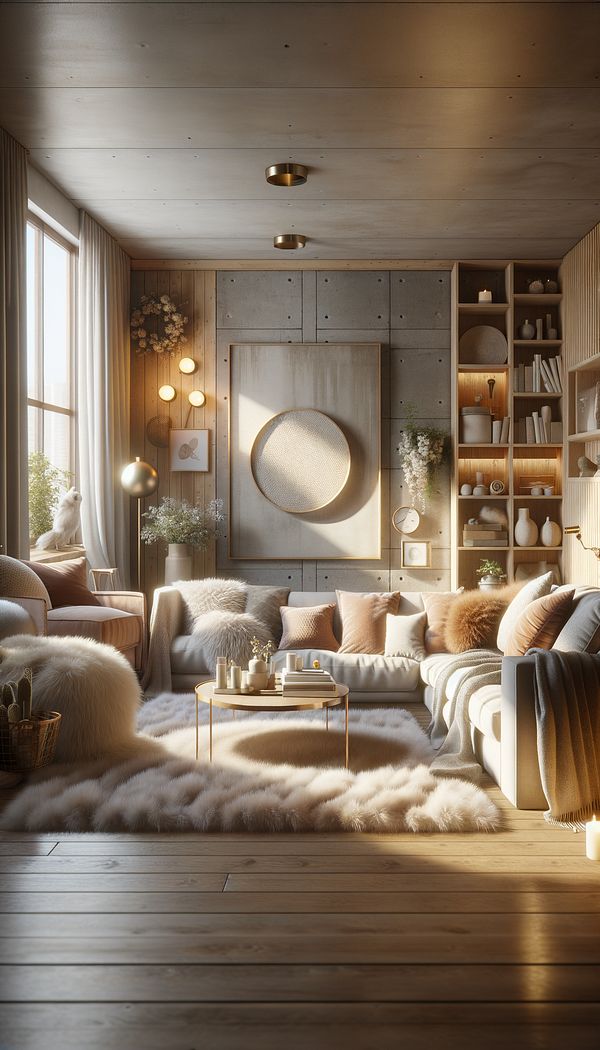What is Hygge?
Hygge is a Danish and Norwegian word for a mood of coziness and comfortable conviviality with feelings of wellness and contentment.
Description
Hygge (pronounced "hoo-ga") may not have a direct translation in English, but it's a deeply ingrained concept in Danish and Norwegian cultures that has gained popularity worldwide, especially in the realm of interior design. It embodies the idea of creating a warm, comfortable, and cozy atmosphere that promotes wellbeing and contentment. Hygge is more than just a decorating style; it's a lifestyle choice that encourages the appreciation of the simple pleasures in life.
In interior design, hygge is reflected through the use of soft lighting, warm textiles, and inviting spaces that encourage relaxation and social interaction. Elements such as candles, fireplaces, comfortable furniture, and personal mementos are often incorporated to create a cozy, personalized environment. The emphasis on simplicity and functionality also aligns with sustainability and eco friendly design, making hygge appealing to those looking to create a mindful and sustainable home.
The principles of hygge can be adopted in any home, regardless of its size or style. By focusing on comfort, personal meaning, and creating a sense of belonging, anyone can achieve a hygge-inspired space that fosters happiness and comfort.
Usage
Hygge is often applied in living rooms, bedrooms, and other areas of the home where relaxation and social interactions take place. For example, a living room designed with hygge in mind might feature a variety of textures through throw blankets and pillows, a soft and warm lighting scheme, and furnishings that encourage people to sit down and spend time together. Similarly, a hygge bedroom could include plush bedding, subdued lighting, and personal items that make the space feel uniquely comforting and secure.
FAQs
-
How do you pronounce 'Hygge'?
'Hygge' is pronounced 'hoo-ga'.
-
Is Hygge only applicable to home interiors?
While hygge is often associated with interior design, its principles of coziness and contentment can be applied to various aspects of life, including outdoor spaces, personal lifestyle, and social gatherings.
-
Can Hygge be combined with other interior design styles?
Yes, hygge can be easily combined with other design styles, including modern, minimalist, and rustic. The key is to maintain a focus on comfort, simplicity, and creating a warm and inviting atmosphere.
Practical Application
To incorporate hygge into your interior design, start by decluttering your space to create a clean and comfortable environment. Add elements such as soft lighting, warm throws, and candles to create a cozy atmosphere. Focus on incorporating items that hold personal significance and bring joy. Finally, ensure your space encourages relaxation and social interaction, promoting a sense of community and wellbeing.
-
Design Styles478 articles
-
Lighting111 articles
-
Decorating Principles & Elements330 articles
-
Textiles & Upholstery252 articles
-
Sustainability & Eco-Friendly Design69 articles
-
PaletteA palette is the range of colors used in a particular design or piece of art.
-
Building EnvelopeThe physical barrier that separates the interior of a building from the exterior environment.
-
Barrel ChairA barrel chair is a type of armchair that features a semi-circular back that resembles the shape of a barrel.
-
Pigmented LeatherPigmented leather is a type of leather that has been treated with a coating of pigment to create a uniform color and texture.
-
CapitalIn interior design, capital refers to the topmost portion of a column.
